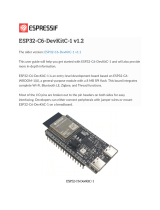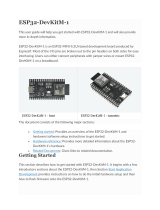
3 U.S. FCC Statement
Additional testing, Part 15 Subpart B compliant
The modular transmitter is only FCC authorized for FCC Part 15 Subpart C 15.247 & 15.209 and that the host
product manufacturer is responsible for compliance to any other FCC rules that apply to the host not covered
by the modular transmitter grant of certification. If the grantee markets their product as being Part 15 Subpart
B compliant (when it also contains unintentional-radiator digital circuity), then the grantee shall provide a notice
stating that the final host product still requires Part 15 Subpart B compliance testing with the modular transmitter
installed.
This equipment has been tested and found to comply with the limits for a Class B digital device, pursuant to Part15
of the FCC Rules. These limits are designed to provide reasonable protection against harmful interference in a
residential installation. This equipment generates, uses and can radiate radio frequency energy and, if not installed
and used in accordance with the instructions, may cause harmful interference to radio communications.
However, there is no guarantee that interference will not occur in a particular installation. If this equipment does
cause harmful interference to radio or television reception, which can be determined by turning the equipment off
and on, the user is encouraged to try to correct the interference by one of the following measures:
• Reorient or relocate the receiving antenna.
• Increase the separation between the equipment and receiver.
• Connect the equipment into an outlet on a circuit different from that to which the receiver is connected.
• Consult the dealer or an experienced radio/TV technician for help.
This device complies with Part 15 of the FCC Rules. Operation is subject to the following two conditions:
• This device may not cause harmful interference.
• This device must accept any interference received, including interference that may cause undesired opera-
tion.
Any changes or modifications not expressly approved by the party responsible for compliance could void the user’s
authority to operate the equipment.
This equipment complies with FCC RF radiation exposure limits set forth for an uncontrolled environment. This
device and its antenna must not be co-located or operating in conjunction with any other antenna or transmitter.
The antennas used for this transmitter must be installed to provide a separation distance of at least 20 cm from all
persons and must not be co-located or operating in conjunction with any other antenna or transmitter.
OEM Integration Instructions
This device is intended only for OEM integrators under the following conditions:
• The transmitter module may not be co-located with any other transmitter or antenna.
• The module shall be only used with the external antenna(s) that has been originally tested and certified with
this module.
As long as the conditions above are met, further transmitter test will not be required. However, the OEM integrator is
still responsible for testing their end-product for any additional compliance requirements required with this module
installed (for example, digital device emissions, PC peripheral requirements, etc.).
Espressif Systems 16 ESP32-C3-MINI-1U User Manual v0.1
























